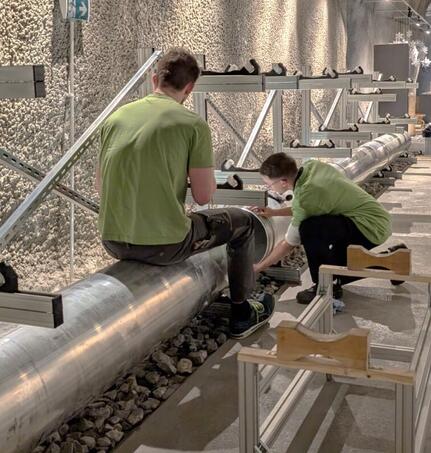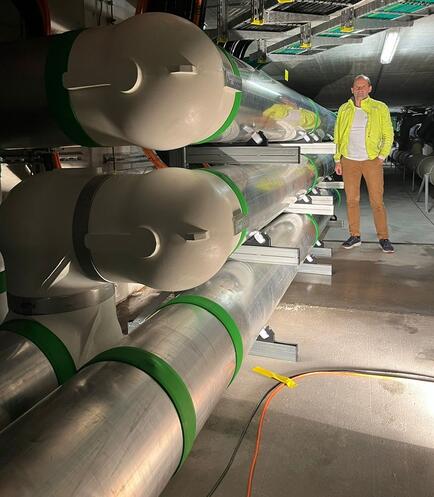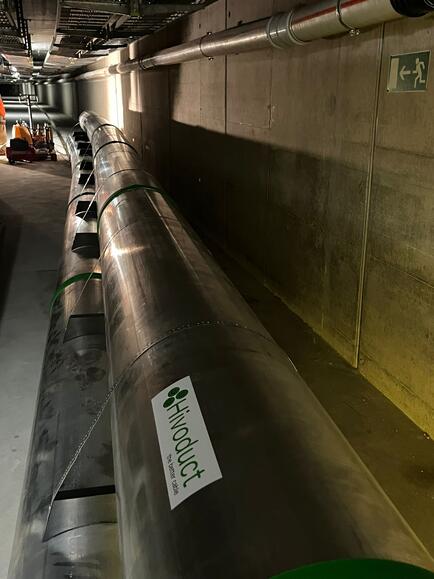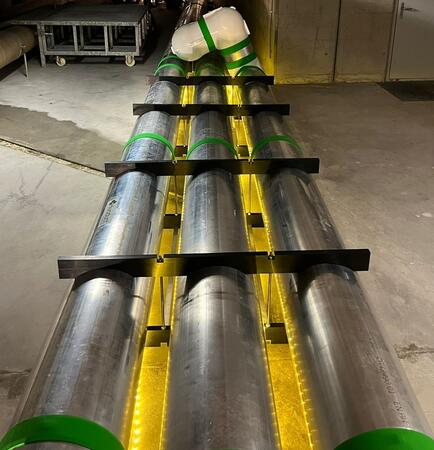High voltage cables
Technology for highest requirements
Pressurized air cables are ideal as high-voltage cables for efficient connections with high transmission capacities.
We support you from engineering to on-site installation – with tailored solutions for your requirements.
Pressurized air cables for high-voltage
Pressurized air cables have the same function as traditional medium- and high-voltage cables and can replace them. This reduces transmission losses, eliminates the need for parallel cable systems, and improves fire protection.
Advantages of Using Pressurized Air Cables
Better Technical Performance
Pressurized air cables offer higher nominal currents of up to 5000 A per cable for maximum efficiency. Additionally, they allow temporary overload capability during operation.Reduced Losses
The larger conductor cross-sections of pressurized air cables reduce transmission losses by a factor of 2-3 compared to XLPE cables.Lower Construction Costs & No Joints
The innovative flange connection and lower heat dissipation enable a more compact installation with reduced space requirements, eliminating the need for complex joint connections. A concrete duct block is also not required.Optimized Fire Protection
The thick metallic casing provides superior safety in fire events and against arc faults, ensuring maximum operational security. This makes pressurized air cables ideal for installation in existing tunnels.Easier Transport & Installation
Lightweight aluminum tubing with low transport weight and small transport units optimizes construction logistics, especially for hard-to-reach construction sites.No Reactive Power Compensation up to 60 km
Traditional underground cables require reactive power compensation from around 20 km in length, leading to additional costs and losses. With pressurized air cables, compensation is only needed from around 60 km, eliminating extra costs for shorter distances and further reducing operational losses.
For technical data details, please see here.
Cost comparison: Pressurized air cables vs. XLPE cables
For nominal currents above 1000 A, pressurized air cables have comparable investment costs to XLPE cables. The higher the nominal current, the more competitive pressurized air cables become. The lower operational losses reduce lifetime costs...
1600 MW energy corridor in existing highway supply tunnel 3-phases, stacked
1600 MW energy corridor in existing highway supply tunnel 3-phases, triangular
1600 MW energy corridor in existing highway supply tunnel 3-phases, side by side
Test installation in your grid

For a new technology like pressurized air cables, it is important for grid operators to gain operational experience. A good way to achieve this is through test installations within their own grid.
Test installationen in your grid
- Experience the technical advantages and performance of Hivoduct pressurized air cables under real conditions by testing them directly in your own application.
Take advantage of the opportunity to test the benefits, flexibility, and adaptability of the technology in your grid. This allows you to gain operational experience before proceeding with large-scale implementation.
Selection guide: Choose a small project where existing solutions (overhead lines, XLPE cables, or busbars) are difficult to apply. Select a project with a high nominal current, as pressurized air cables offer the greatest benefits in such cases.
Temporary installation: If you only require a temporary test installation, we recommend using pressurized air cables as construction site cables. During switchgear modifications, temporary connections often need to be installed. Pressurized air cables are flexible, robust, and can be reused at other locations after use.






